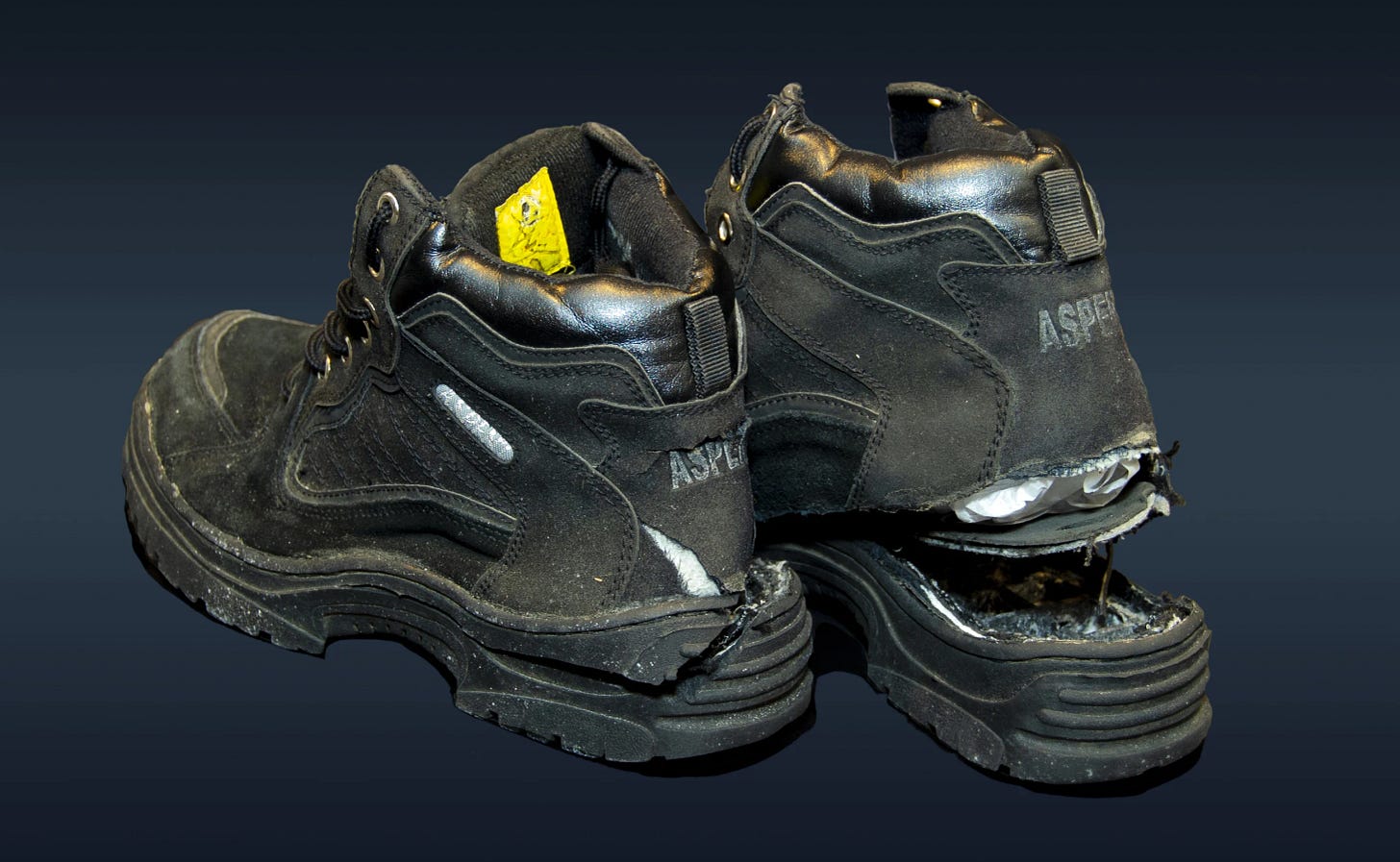The Transportation Security Administration (TSA) recently decided to allow people to keep their shoes on while going through airport security. In a related move, I have decided to allow people to keep their shoes on while entering our home.
Anyone entering our home may keep wearing their shoes if the following conditions are met: (1) the shoes look clean; (2) it is not raining heavily; and (3) my wife is not home.
It is not that my wife would necessarily object to someone entering our home without removing their shoes in the entryway. She has certainly made exceptions over the years. But I have not consulted her before deciding that the shoe-removal tradition we have followed puts an unnecessary burden on our guests. Older people have trouble bending down to put their shoes on when leaving our home, while youngsters have trouble tying their laces. It’s an extra five minutes of their lives that I’m hoping to return to them.
The TSA, on the other hand, is concerned more about safety than convenience. The shoe removal rule was instituted in August 2006, when the TSA determined that shoes continued to pose a serious threat. About five years earlier, on Dec. 22, 2001, an American Airlines passenger named Richard Reid, flying from Paris to Miami, tried to detonate his shoes. He had filled them with 10 ounces of explosive material, as well as two large feet. Fortunately he had trouble lighting the fuse, and passengers and crew members pounced on him before he could blow up the plane. Reid, known as the “shoe bomber,” is serving a life sentence in federal prison. (I do not know if the TSA has informed him that his name is no longer being cursed at security checkpoints.)
The shoe-removal rule was in place for almost two decades and during that time, very few shoes were found to pose actual threats. The most serious incident reportedly happened a few years ago at LaGuardia Airport in New York when a passenger from Europe placed his shoes on the conveyor belt, causing two TSA officers to immediately faint from the odor. Smelling salts were needed to revive them. The passenger was arrested and sentenced to three hours on a Spirit Airlines flight. He was ordered to keep his shoes on.
The main reason for the rescinding of the shoe-removal rule is improved technology. The TSA now has the technology to detect explosives, contraband or anything else in your shoes while you are wearing them. If you need to sneak anything, don’t do it in your sneakers.
Thankfully, I do not have to worry about any explosives entering my home through shoes. But shoes can certainly carry a lot of dirt, which is why Donald Trump was once spotted speaking directly to Volodymyr Zelenskyy’s shoes, asking, “Do you have any dirt on Joe Biden?”
Keeping dirt out of a home is one of the main reasons that the shoe-removal tradition is followed in India and other Asian countries. It was natural for my wife and I to do what is commonplace in our native land. But aside from the inconvenience to our guests, I wonder whether it makes sense to be concerned about dirt on a guest’s shoes when our dog, Lulu, refuses to wipe her feet before entering our home. She not only puts her dirty feet on our carpet, she rolls around on it, as though the carpet is her best friend with whom she needs to share whatever she picked up outside.
Anyone who keeps a dog inside their home is saying to the world, “A little dirt won’t kill me.”
Neither will a pair of shoes, as the TSA has concluded.





To me, the best use of a shoe was in the 1960’s sitcom, “Get Smart,” in which Maxwell Smart’s shoe housed a telephone. Also, the “Cone of Silence” was quite an innovation.
I worry more about the dirt IN the house. If I asked people to take off their shoes, they might find that either their bare or stockinged feed would be well, dirty, by the time they left. Walking barefoot at home is a good test (for me, not my guests) for when the floors need washing.